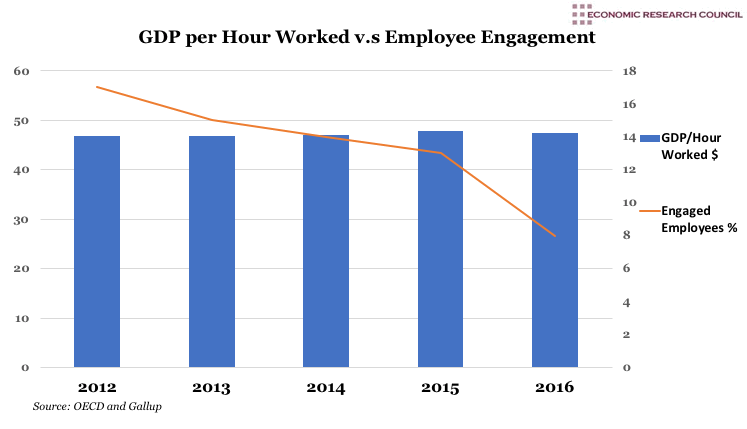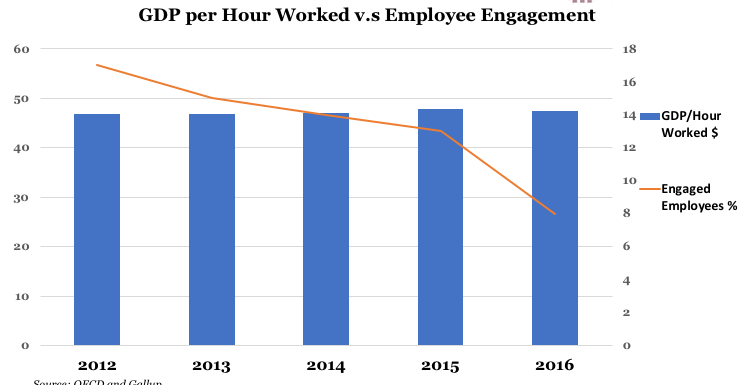
Summary
The chart shows that just 8% of UK employees are enthused about their work and work environment in 2016. This represents a fall from 17% in 2012. The chart shows that GDP per hour worked, an indicator of productivity, has been flat since 2012. For comparison, of US workers surveyed in 2016, over four times as many (33%) reported engagement in their role. Looking at Europe, engagement levels are generally significantly lower than the US, and yet 6 western and northern European countries exceed the UK’s engagement levels. Norway and Denmark show the highest engagement among workers after the US, both at 17%. Only 3 European countries fall behind the UK in the employee engagement scale. As the rates of GDP per hour worked are significantly higher in the US, Norway, Denmark, Sweden and Germany, some may assert that this employee disengagement contributes to the stagnation in UK productivity.
What does the chart show?
The bars display the OECD estimated UK GDP per hour worked in USD. The line displays the percentage of employees who, when polled, stated that they were enthusiastic and engaged in their job. Gallup defines an engaged employee as one that exhibits a catalogue of perceptions that predict positive business outcomes. According to Gallup, such workers ‘[help] move their organisations forward by driving performance and innovation’ as well as via reduced absenteeism and positive interactions with customers. Alarmingly, this leaves 73% who identify as ‘not engaged’ or demonstrating little energy or passion in their work. A further 19% class themselves as ‘actively disengaged’, a group that the polling firm states is likely ‘resentful…and… acting out their unhappiness on the job.’
Why is the chart interesting?
In a March 2017 speech to the LSE, the Bank of England’s chief economist, Andy Haldane lambasted poor quality management practices in UK companies as a potential driver of the productivity crisis, hoping to spur managers into corrective action. He evidenced this with the fact that only 1% of UK firms boasted high productivity growth of 6% or more annually, and third had seen no productivity growth whatsoever since 2000. However, the Bank of England’s decade-long policy of persistently low interest rates have led opponents to blame the Bank for the artificial sustenance of unproductive ‘zombie’ firms, which deflate productivity measures.
A 2016 study of 82,000 varied businesses across 73 countries demonstrated that employee motivation shows strong correlation with labour productivity. The study found that businesses in the top quartile of engagement scores were 17% more productive and 21% more profitable than those in the bottom quartile.

